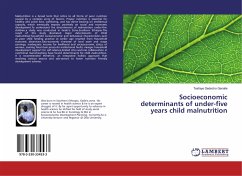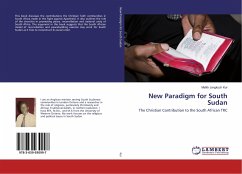Child malnutrition remains highly prevalent in developing countries;this high prevalence rate can be attributed to a number of factors ranging from cultural, ethnic and culture, ethnic and economic problems. This book will endeavor to illustrate the determination of malnutrition prevalence which will be largely based on the measurement of three parameters; wasting,stunting, underweight, it will further include study of the socio-economic and demographic characteristics and statues of subjects' households.The study reveals that there is a high prevalence of malnutrition of various types and intensities among the children under study, and that low income has a major significant influence on the nutritional status of the children. Based on the findings, some recommendations have been suggested that would help curb nutritional vulnerability amongst Sudanese children which will consequently promote child development and survival. This work is useful for researchers, students, policy makers and stockholders in public health sector.








